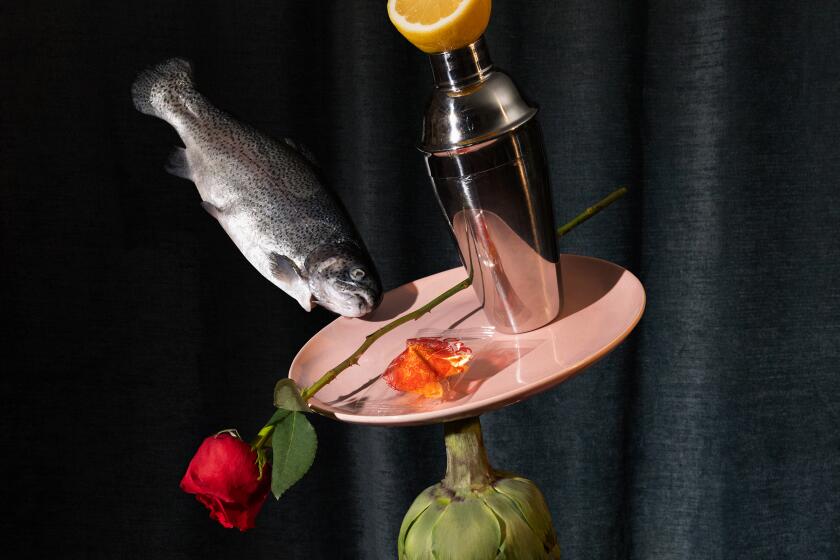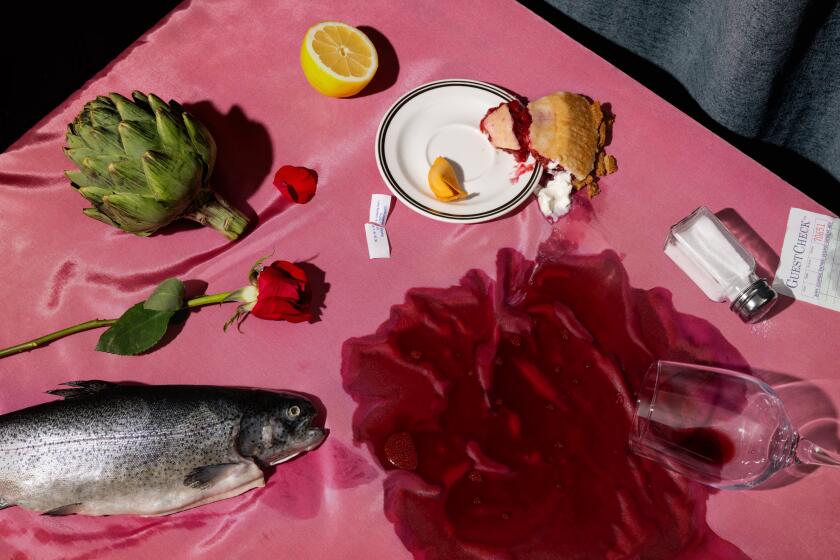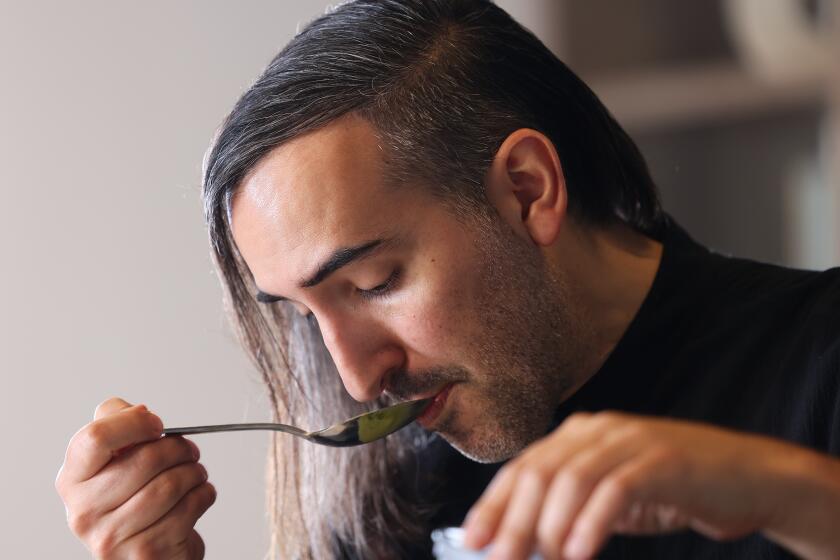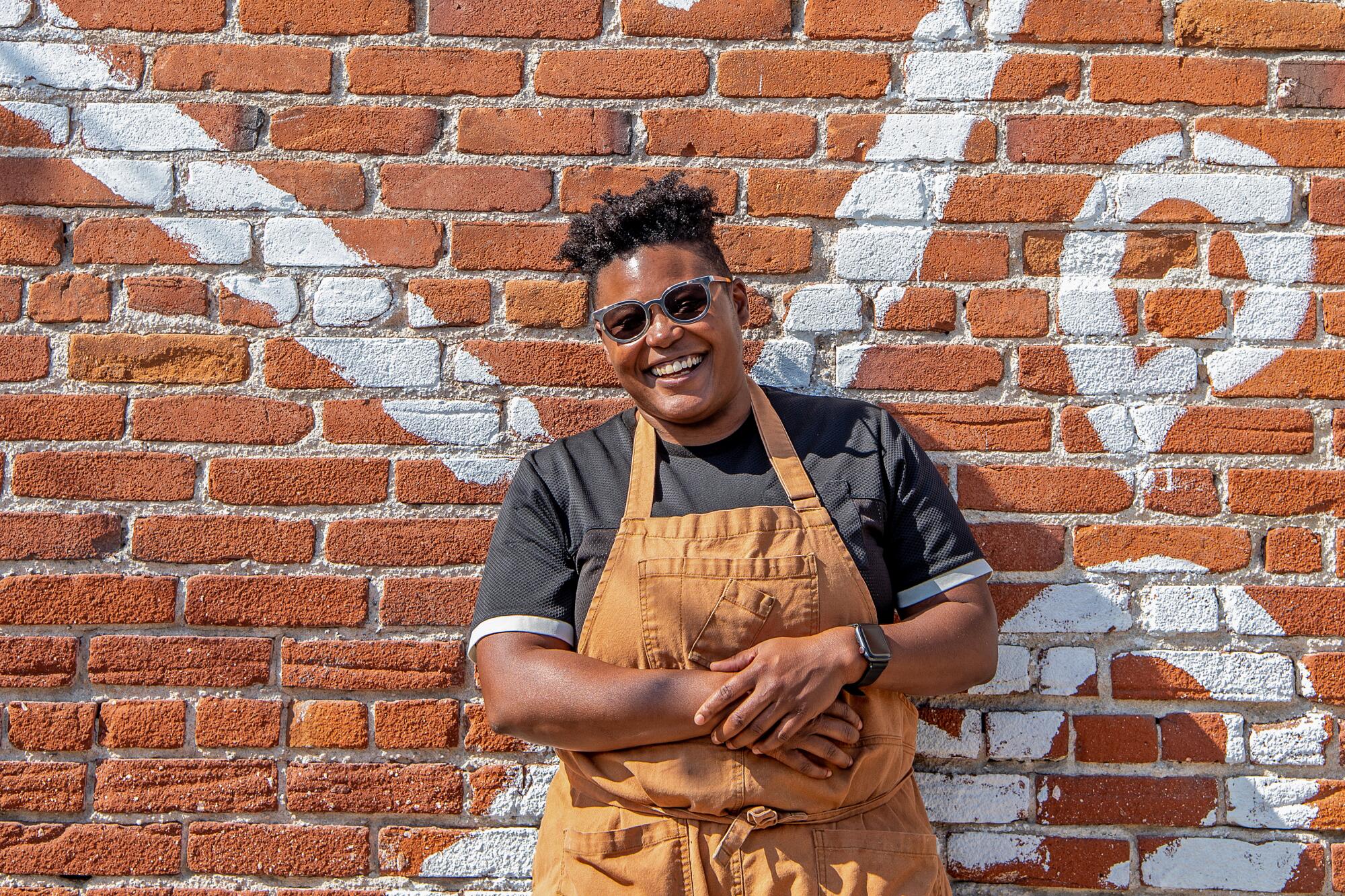
In a tough restaurant economy, L.A. chefs are opening ambitious restaurants.
- Share via
In July, after more than a year of delays prepping her first bricks-and-mortar restaurant — and a long stretch earlier searching for the right spot — chef Rashida Holmes opened Bridgetown Roti with high hopes. Its previous incarnations as a pop-up and Arts District takeout operation earned her the 29th spot on the 2022 L.A. Times 101 Best Restaurants list plus a 2023 James Beard emerging chef nomination.
The opening is welcome relief not only for Holmes’ customers, who during Bridgetown’s hiatus missed her paratha-style roti and other Caribbean American specialties (Times critic Bill Addison is already extolling the new place’s macaroni and cheese pie), but for those L.A. restaurant-goers dismayed in recent months over too many closures of beloved and high-profile places. Could the opening of Bridgetown Roti after such a long gestation, plus a wave of other restaurant debuts, be a sign of recovery?
Why the industry is facing a uniquely tumultuous year, and what it means for restaurateurs, chefs and diners.
At the end of 2023, Times reporter Stephanie Breijo made note of more than 65 restaurants that went out of business during the year, a heartbreaking account of loss. For whenever a restaurant closes, it not only harms the livelihoods of its workers and owners, it affects a vast network of suppliers who need a steady flow of business and, of course, its customers for whom a favorite gathering spot instills a sense of neighborhood belonging and loyalty to a city.
Since the start of 2024, the losses have continued. Inflation, a sluggish return to office work following COVID and a slower-than-expected recovery from last year’s Hollywood strikes have hurt restaurants. Eater Los Angeles has kept a running tab of 2024’s closures, which with four months left in the year already numbers more than 75.
The industry is facing a crisis as new legislation, inflation, higher wages and pandemic fallout have chefs and owners worried for the future of mom-and-pop restaurants.
Among the restaurant’s we’ve lost are Teresa Montaño’s singular paella and fideuà specialty place Otoño; Walter and Margarita Manzke’s bistro Bicyclette and Michelin one-star spot Manzke (though their anchor restaurant, République, remains steadfast and even celebrated its 10-year anniversary at the end of last year); Tim Hollingsworth’s ambitious modern American Otium next to the Broad museum downtown, which closes this weekend with hopes to reopen in a new location; chef Angelo Auriana’s steampunk wonderland Brera Ristorante run with Matteo Ferdinandi and Francine Diamond-Ferdinandi (though their Factory Kitchen is still serving the fantastic handkerchief pasta, mandilli di seta, in the Arts District and their Las Vegas Brera Osteria continues at the Venetian’s Grand Canal); plus Glen Ishii and Caroline Shin’s beloved Little Tokyo brunch spot Jist Cafe, which helped serve food to seniors through the Little Tokyo Eats program.
1
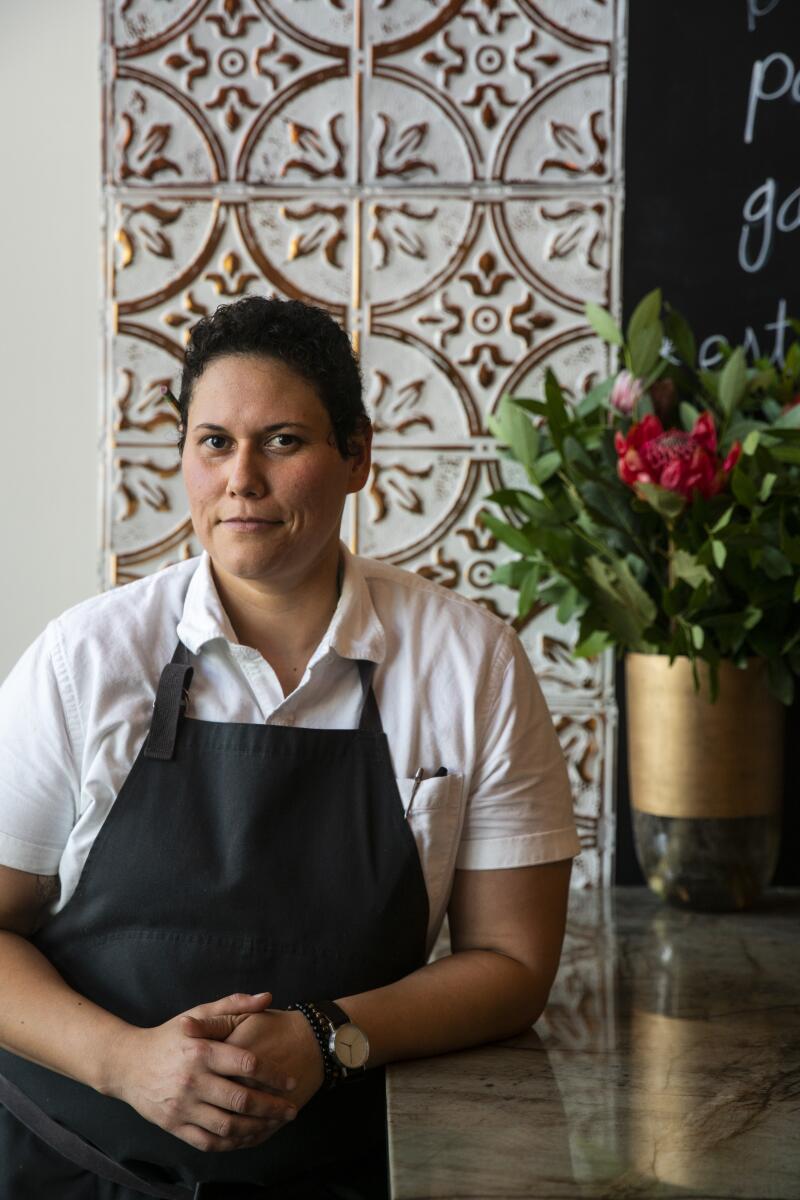
2
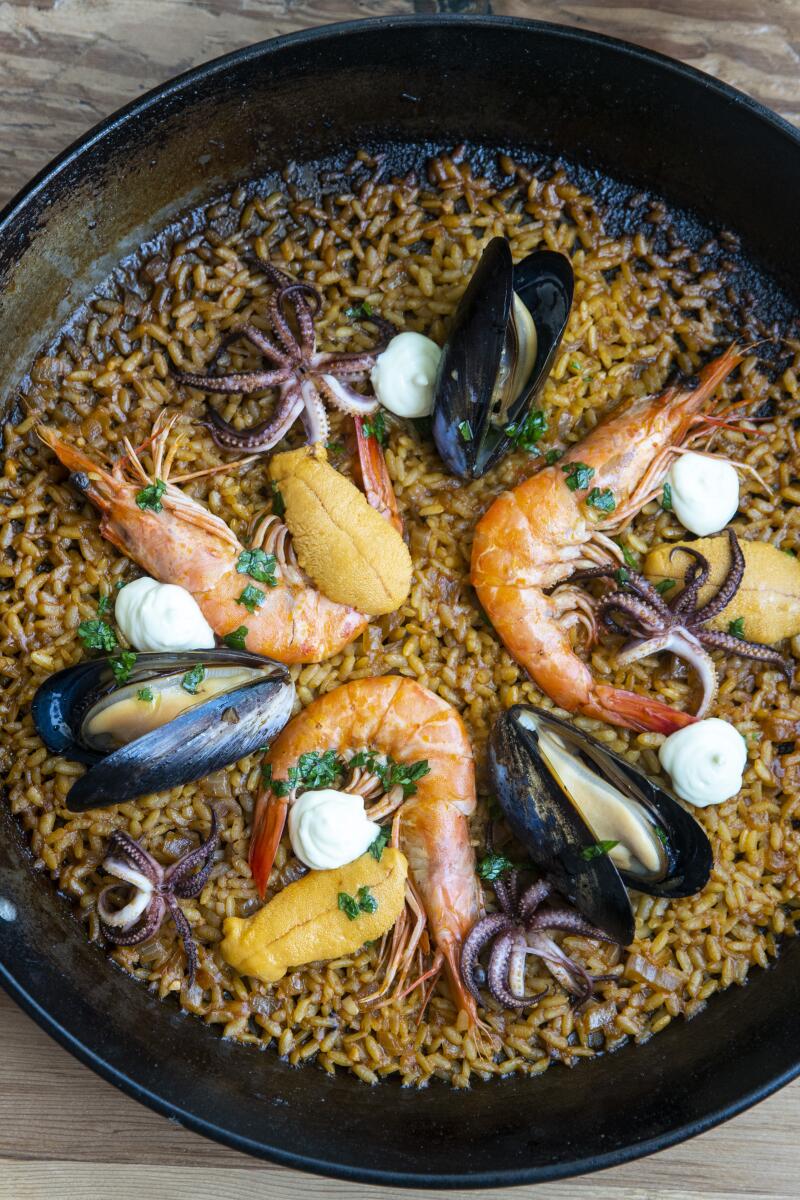
1. Chef Teresa Montaño in 2018 when she opened Otoño in Highland Park. 2. Her mariscos paella was one of Otoño’s standout dishes. (Kent Nishimura /. Los Angeles Times)
“The biggest challenge restaurants are facing is the cost of food, of beverages, the cost of labor,” says chef Mary Sue Milliken, who with business partner Susan Feniger has opened and closed many restaurants in Los Angeles since the 1980s and continues to run Socalo in Santa Monica and the recently opened Alice B in Palm Springs. She’s also one of the founders of Regarding Her, a nonprofit that grew out of the pandemic to support women chefs, owners and managers. “It’s just all those things have so exponentially increased in such a short amount of time, and operators are afraid to raise their prices to the appropriate level because diners will have sticker shock and they’ll be freaked out. It’s a conundrum. A lot of people can’t continue to break even or lose money for any real length of time.”
And yet, amid all these losses, chefs and restaurateurs continue to open ambitious, personal and creatively challenging places that even in tough times make Los Angeles one of the most exciting restaurant cities in the world.
Some of the openings are actually reopenings — such as the revival of Cafe Tropical in Silver Lake and, after shuttering in 2018, the reemergence of the Watts nonprofit Locol from chefs Daniel Patterson and Keith Corbin, who started his culinary career as an inexperienced cook out of prison at the original Patterson and Roy Choi project in 2016 and is now the head chef at Alta Adams.
Vespertine, Jordan Kahn’s conceptual tasting-menu restaurant, which had been closed for full service since March 2020, reopened this year in April and already received two Michelin stars last month.

The groundbreaking fine-dining restaurant Vespertine reopened with a new menu and vision and now two Michelin stars. What’s next for chef Jordan Kahn?
Then there are more intimate expressions of a chef’s vision. Ricardo Zarate’s the Hummingbird is an Echo Park ceviche house that he recently opened on his own after shutting down the more elaborate Causita, which he ran with partners. The new place, smaller and less sleek than Causita, gives customers a chance to watch the chef at work behind the bar. The drink cups are plastic and you get your own ice water from a dispenser, but the service is caring and the food, including an aji amarillo hummus flatbread and sesame-leaf-wrapped shrimp dumplings with tiger milk aioli, is inventive and delicious. And compared to restaurants that are charging $200 to $400 for tasting menus, the Hummingbird is affordable — the most expensive item on the menu is a $36 sliced rib-eye steak and the ceviches are $14 to $17.
1
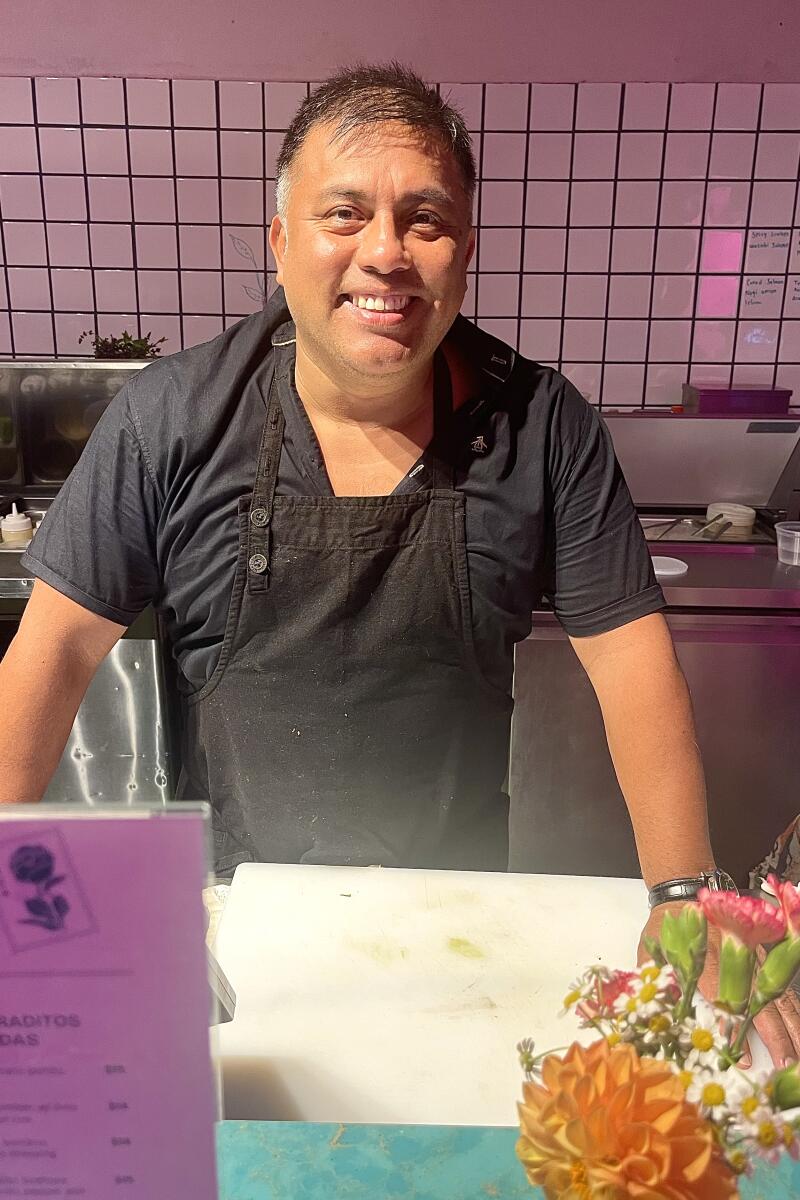
2

1. Chef Ricardo Zarate at his new Echo Park restaurant the Hummingbird Ceviche House. 2. Hummingbird’s sesame-leaf-wrapped shrimp dumplings with tiger milk aioli. (Laurie Ochoa / Los Angeles Times)
“If chefs focus more on doing concepts that deliver high-quality, lower-price-point stuff — where it’s actually affordable — I think that would be really important to do right now,” says chef Brian Dunsmoor. “I think Joy on York [Vivian Ku’s Taiwanese cafe in Highland Park] is like a really good example of that.”
His own menu at Glassell Park’s Dunsmoor has a range of prices that reflect the high cost of ingredients and labor. Dunsmoor’s priciest dish is a shareable 32-ounce beef rib-eye with smoked bone marrow for $129, but he also serves an incredible Carolina Gold rice dish with shrimp butter, Parmesan and chives — a sort of Lowcountry risotto — that makes an excellent main course for $29.
Dunsmoor understands that in order to charge prices that reflect his costs — “Let’s be real,” he says, “you can get a taco for $2 that’s as good as any bite you’re going to have at a fine-dining restaurant” — you have to provide an experience that leaves customers satisfied.
“If people are paying that kind of money and then being underwhelmed,” he says, “they’re going to stop going out.”
1
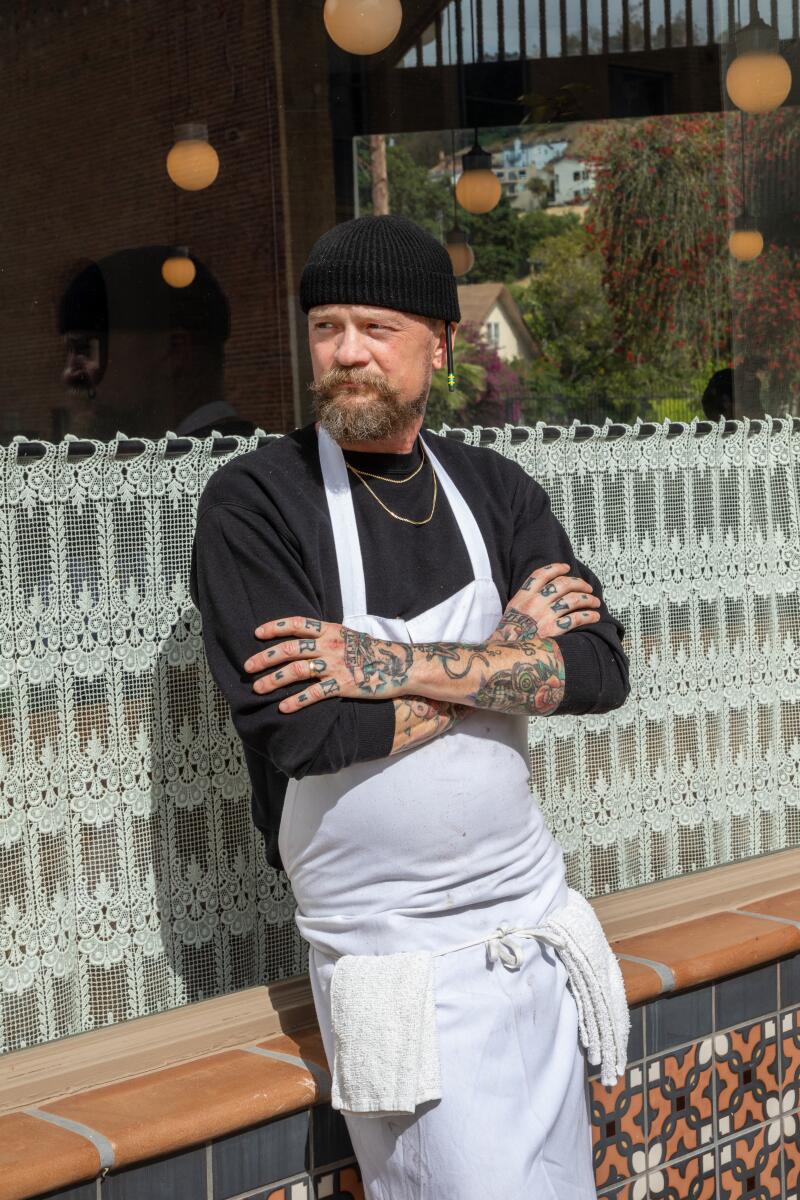
2

1. Chef-owner Brian Dunsmoor outside his Glassell Park restaurant Dunsmoor. (Ricardo DeAratanha / Los Angeles Times) 2. Jesus “Chuy” Cervantes, chef de cuisine of Damian and Ditroit Taqueria, at the Los Angeles Times Test Kitchen. (Stephanie Breijo / Los Angeles Times)
“We opened in October of 2020,” when COVID was still triggering stay-at-home orders, says chef Jesus “Chuy” Cervantes, who leads the kitchen at the Enrique Olvera restaurant Damian and the adjoining taco spot Ditroit in the Arts District. “That process began what I feel is a new form of creativity. The scope of creativity became much bigger than our menu. Every single process that we do now — from our labor models to our relationships with purveyors — has to be very thoughtful.”
Curtis Stone, who is closing his tasting-menu restaurant Maude in Beverly Hills this month and plans to replace it with the Pie Room, a business he started during pandemic shutdowns, now is focusing most of his energies on his restaurant Gwen in Hollywood. “I love cooking there,” Stone says of Gwen. “And I love the idea of giving people choice. You know, come in and have a steak, come in and do a full a la carte menu, come in and do a tasting menu.”

Dave Beran, who closed his 18-seat tasting-menu restaurant Dialogue in 2020 in the midst of pandemic shutdowns, has been concentrating his energies on his Santa Monica brasserie Pasjoli, which has gone through changes since its 2019 debut.
“Pasjoli today is a different restaurant,” Beran says. “When we opened, it was like a high-end French bistro. Then my focus became, let’s make it the neighborhood restaurant that we always wanted it to be.” Now the restaurant environment seems to have recovered enough for Beran to shape-shift yet again, indulging what he calls his “tweezer food itch.” Recently he announced on OpenTable that starting Sept. 16, Pasjoli will switch to a prix fixe menu format and end its a la carte offerings. Still, he’s paid attention to price; instead of charging more than $200 as many do, his five-course menu is $95, or $125 for a special five-course pressed-duck menu.
The tasting menu at the new incarnation of Baroo, this year’s L.A. Times Restaurant of the Year, is $115, more affordable than many other fine-dining places, but it’s still a change from the original storefront version of the restaurant, which in 2015 served one-dish meals for $9 to $15.
“We’re starting to see a lot of modern Korean fine-dining restaurants in New York and other cities, yet L.A., with the country’s largest Korean population, didn’t really have that when we started planning the new Baroo,” says Mina Park, who runs the elegant Arts District restaurant with her husband and partner, chef Kwang Uh. “So one of the things we wanted to do here is share an elevated version of modern Korean food.”
1
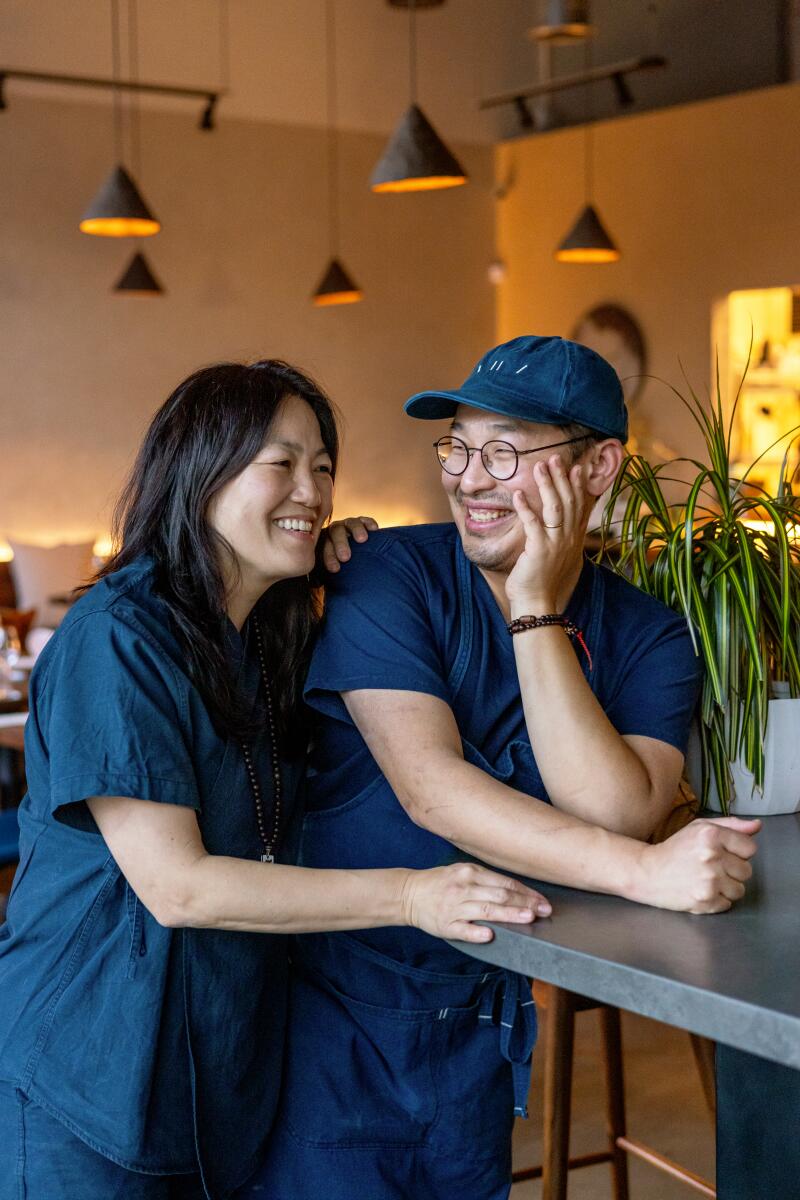
2
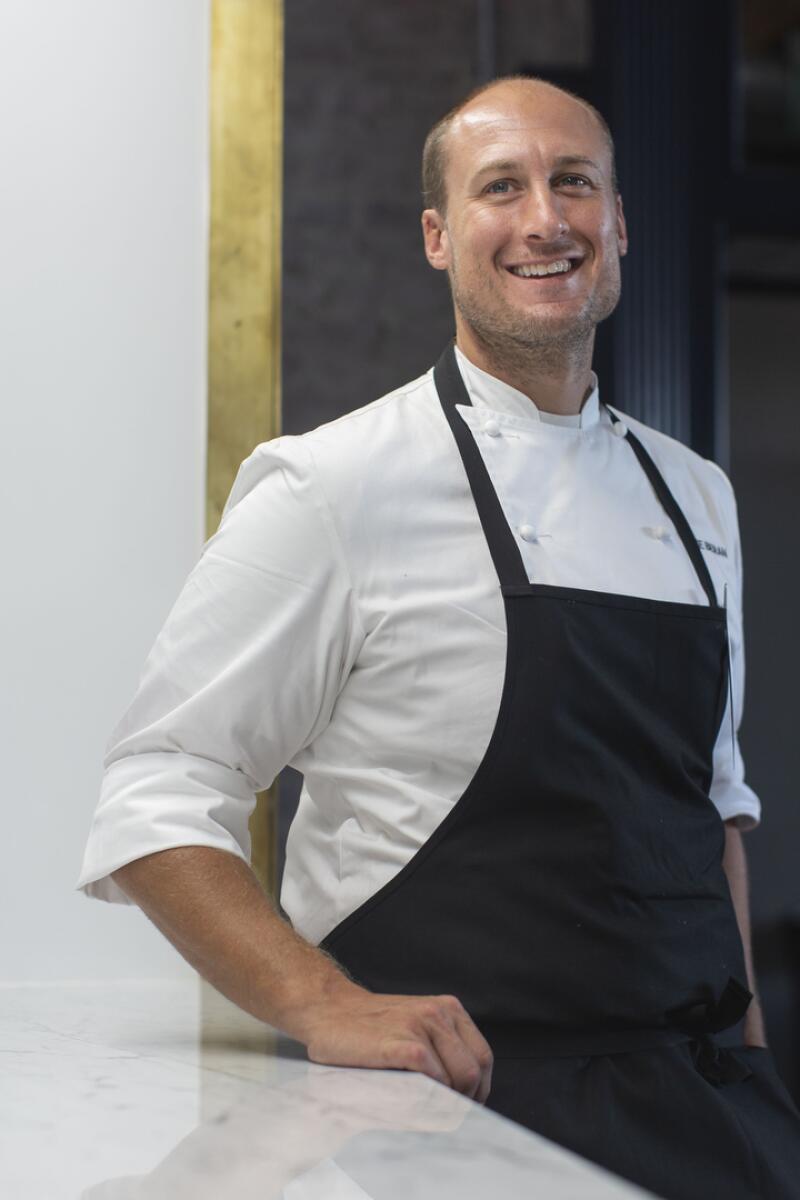
1. Baroo owners chef Kwang Uh, right, and Mina Park, husband-and-wife restaurateurs, inside their modern Korean restaurant in L.A.’s Arts District. (Silvia Razgova / For The Times) 2. Pasjoli chef Dave Beran, who is switching to a tasting menu format this month at his Santa Monica restaurant. (Allison Zaucha / For The Times)
It’s similar to what chef Jon Yao did with Taiwanese flavors and traditions at Kato, No. 1 on the most recent L.A. Times 101 Best Restaurants list.
At the Vespertine spinoff restaurant Meteora, which received its first Michelin star in August, Kahn says that he made the switch from an a la carte to a tasting-menu format because that’s what his customers kept asking for. The most common feedback servers got on the menu was, “I want the chef to decide.”
“The fact that there are more tasting menus now tells me that the L.A. dining landscape is changing,” Kahn says. “That people are seeking things beyond the status quo.” He sees room for tasting menus as well as street food and everything in between.
“We need all of these different styles of cuisine,” he says. “Every single one is equally relevant.”
“It’s a magical time for L.A. right now,” Beran says. “When Dialogue opened in 2017, there were a lot of great chefs stepping out, doing something special. And you know, I think we’re kind of falling back into that moment again. There are a lot of really special things that are going to happen. I think it’s great for the city and none of them are alike.”
“I hope that by this time next year there are more Caribbean restaurant spots popping up in Los Angeles,” Holmes recently told Breijo, “because I think that the market is ripe and people want to have it. We need more of us. L.A. is too big to not have there be more of us here, really making waves.”
More to Read
Eat your way across L.A.
Get our weekly Tasting Notes newsletter for reviews, news and more.
You may occasionally receive promotional content from the Los Angeles Times.
